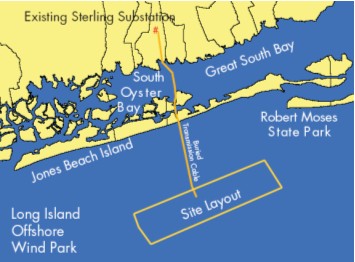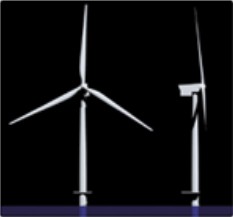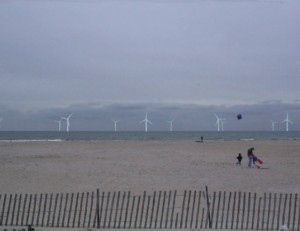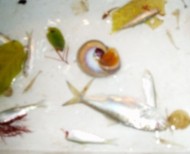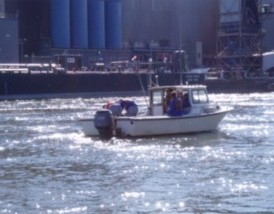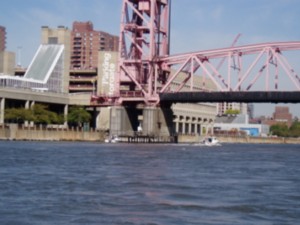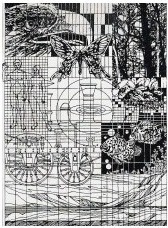 |

Energy Crisis!
(printer friendly version
uses Acrobat Reader) |
|||||||||||||||||||||||
|
of EEA's Environmental Consulting Activities Winter 2006
e-mail addresses:
For information or quotes, Phase I ESAs
|
||||||||||||||||||||||||
 |
|
Schematic of a Typical Fuel Cell |
|
Alternative Energy: •Offshore Wind • Fuel Cells • Tidal Currents |
|
It is no surprise that we are in an energy crisis. Crude oil supply problems, rapidly escalating demand for energy, energy pricing policies, oil import quotas, lack of incentives to invest in domestic energy facilities, and depletion of domestic oil and gas reserves to name a few. Demand for energy has surged in recent years at an average rate of 4.3 percent. Recent statistics report that, overall, the United States consumes over 20 % of global energy output. High energy costs and the higher demand for fuel consumption increase the burden, adding pressure to the American economy. President Bush’s State of the Union address clearly stated the government’s agenda on domestic energy concerns. The president proposed a 22% increase in federal funding aimed to develop alternatives to petroleum. Alternative examples mentioned included solar energy, wind power, and alternative fuels (ethanol, hybrid gas/electric or hydrogen powered vehicles). Pick up most regional and local newspapers or magazines and you’ll read about the expanding energy problems and economic effects. Look close and you will also see features on alternative energy options as well. So let’s take a look at some of these energy efficient alternatives: wind energy, fuel cell substations and tidal currents.
Wind Energy For the last three years, EEA has been working with the Long Island Power Authority (LIPA) on their Offshore Wind Park Project (see EEA’s Spring 2003 Newsletter, Winds of Change Blow across Long Island). This Long Island Offshore Wind Park (LIOWP) would be placed along the south shore of Long Island, about four miles offshore. Specifically, the wind park would be located SE of Jones Beach State Park and SW of Robert Moses State Park. The facility will consist of 40 wind turbines that will produce 140 megawatts (MW) of power for the island.
The regulatory and environmental review began in 2002 with a Phase I Preliminary Wind Assessment Study conducted by LIPA, AWS Scientific and New York State Energy Research and Development Authority (NYSERDA). Results showed an untapped potential of over 5,000 MW of wind energy off Long Island’s shores. In 2003, EEA was part of an environmental team that conducted the Phase II Siting Assessment. EEA’s tasks included:
Article VII Application Goes Ahead In addition,
EEA was hired by Keyspan to compile the Article VII application to
be submitted to the New York State Public Service Commission for
installation of the transmission line for the LIOWP. EEA has
completed the field surveys for all proposed transmission routes for
the application. Survey topics included benthos, terrestrial
vegetation, wetlands, hard clams, avifauna, wildlife, Submerged
Aquatic Vegetation (SAV) and land use.
It is expected to be operational in 2008. This offshore wind park would be the first one in the United States. For more information, contact Michelle Nannen at our Stony Brook office (631-751-4600) or mailto:mnannen@eeaconsultants.com. Fuel Cells Fuel cells are similar to batteries in many ways. Both use an electrochemical process to convert energy into power. The advantages of fuel cells are formidable: ¤ Fuel cells are the cleanest fossil fueled energy generators today. ¤ Emissions are cleaner than ambient air in some cities. Fuel Cells are quiet, too: noise levels are about as loud as a window air conditioner. ¤ Eliminates the need for unsightly, inefficient and expensive transmission and distribution lines. ¤ Cost savings range from 25% to 40% lower than conventional energy service. ¤ The heat by-product can be used for hot water, process, or space heating and cooling at 140 to 250 degree Fahrenheit Fuel cells are providing clean, reliable power to hospitals, nursing homes, offices and hotels all over the world. Sited indoors or out, on the roof or in a basement, fuel cells generate power close to the load, so you don't have to worry about low voltage, load addition limitations, power quality and power reliability problems.
|
|||||||||||
|
A fuel cell is an electrochemical device that combines hydrogen fuel and oxygen from the air to produce electricity, heat and water. Fuel cells operate without combustion, so they are virtually pollution free. Since the fuel is converted directly to electricity, a fuel cell can operate at much higher efficiencies than internal combustion engines, extracting more electricity from the same amount of fuel. The fuel cell itself has no moving parts - making it a quiet and reliable source of power. The fuel cell is composed of an anode (a negative electrode that provides electrons), an electrolyte in the center, and a cathode (a positive electrode that excepts electrons). As hydrogen flows into the fuel cell anode, platinum coating on the anode helps to separate the gas into protons (hydrogen ions) and electrons. The electrolyte in the center allows only the protons to pass through the electrolyte to the cathode side of the fuel cell. The electrons cannot pass through this electrolyte and therefore must flow through an external circuit in the form of electric current. This current can power an electric load. As oxygen flows into the fuel cell cathode, another platinum coating helps the oxygen, protons, and electrons combine to produce pure water and heat. Individual fuel cells can then be combined into a fuel cell "stack." |
|
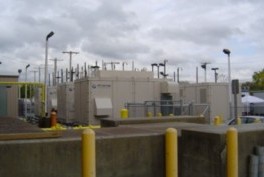 |
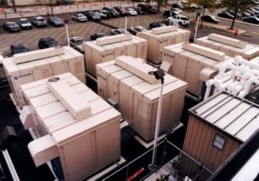 |
|
Verizon Fuel Cell Site in Garden City, New York |
|
In New York there are numerous fuel cell installation sites and they are on the increase. In New York City, there are many operating fuel cells including at the Bronx Zoo, 4 Times Square (Durst Building), Battery Park City, Corona Rail Yard garage and a Central Park Police substation. The Police substation is grid independent (the fuel cell is the sole source of electricity) and thus is unaffected by power blackouts. On Long Island, Verizon has seven fuel cells installed by UTC Power, each able to generate 200 kilowatts (kW) of electrical power per hour. LIPA/Keyspan currently has approximately 100 5 kW fuel cells at the West Babylon substation and are considering increasing the generation capacity to 10 megawatts.
Tidal Currents
Verdant Power is seeking a Federal Energy Regulatory Commission license to generate electrical power using the natural tidal current of the East River in New York City. Verdant Power hopes to supply power to residents of Roosevelt Island using turbines that will rotate underwater, similar to windmills. The turbines will generate electricity by harnessing the strong tidal energy of New York’s East River. This Roosevelt Island Tidal Energy Project would be the first of its kind in the world. Verdant Power is currently awaiting approval to install six study turbines in order to assess both the efficiency of the turbines relative to their placement in the water column and the effects of the turbines on the surrounding environment and marine
